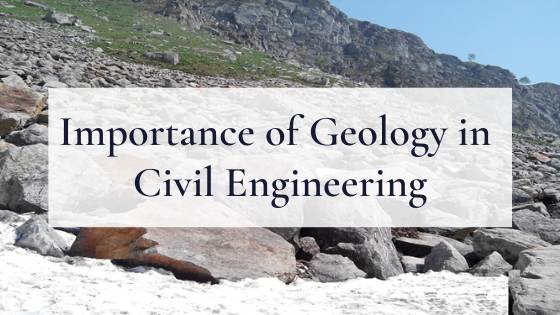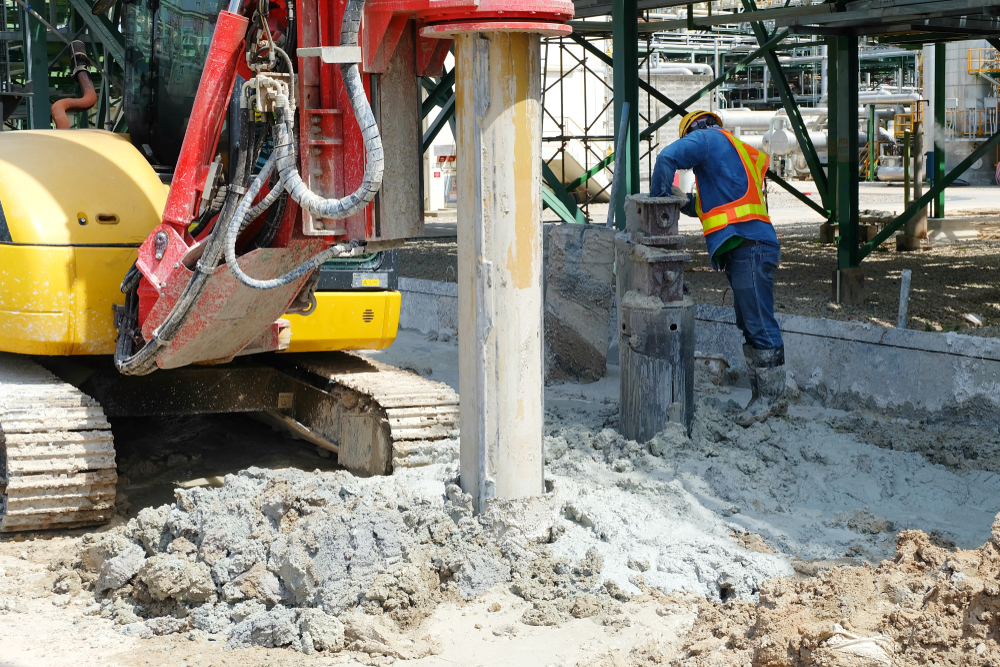The smart Trick of Geotechnical Engineering For Construction Projects That Nobody is Discussing
Table of ContentsUnknown Facts About Geotechnical Engineering For Construction ProjectsThe 7-Second Trick For Geotechnical Engineering For Construction ProjectsGeotechnical Engineering For Construction Projects Things To Know Before You Get ThisGeotechnical Engineering For Construction Projects Can Be Fun For EveryoneGeotechnical Engineering For Construction Projects Things To Know Before You BuyThe Greatest Guide To Geotechnical Engineering For Construction ProjectsFascination About Geotechnical Engineering For Construction Projects
Concepts and Technique of Ground Renovation. Ground Improvement Principles And Applications In Asia. Design analysis in rock technicians.Cengage Learning, Stamford, 666 p. Atkinson, J., 2007. The mechanics of soils and structures. The Observational Approach in ground design principles and applications.
Unknown Facts About Geotechnical Engineering For Construction Projects
Laboratory and area testing plays an important function in this procedure. By extracting examples from the earth's subsurface and using a collection of tests, geotechnical engineers can forecast the behavior of dirt layers and assess their suitability for numerous building and construction endeavours. The essence of geotechnical design in civil design can not be overstated, attributable to a number of variables: The initial action in any kind of geotechnical study includes determining the soil kind at the building website.
The structure acts as the bedrock of any kind of building and construction project. Selecting the suitable foundation type is a choice that pivots on the thorough evaluation supplied by geotechnical design.

Geotechnical site investigation is an essential action in the preparation and implementation of any kind of construction task. It entails the collection and evaluation of data connected to the physical residential or commercial properties of dirt and rock below a proposed building site. This info is important for the design and building of risk-free, secure, and sustainable structures.
9 Simple Techniques For Geotechnical Engineering For Construction Projects
, likewise recognized as subsurface expedition, involves a series of tasks intended at determining the soil, rock, and groundwater problems at a building and construction site. The primary purposes are to recognize possible geotechnical hazards, evaluate the engineering residential or commercial properties of subsurface products, and supply referrals for the layout and building and construction of foundations, keeping walls, and other structures.
This might consist of geological maps, aerial pictures, previous examination reports, and historical information. The workdesk research aids in identifying prospective geotechnical problems and preparing the subsequent fieldwork. Following the desk research study, a site reconnaissance is conducted to visually inspect the site and its surroundings. This involves observing the topography, drainage patterns, existing structures, plant life, and any kind of indicators of instability or disintegration.
Facts About Geotechnical Engineering For Construction Projects Revealed
Shallow examination pits are excavated to straight observe and sample the dirt and rock. This method serves for examining the upper layers of the subsurface and recognizing near-surface risks. Non-invasive geophysical approaches, such as seismic refraction, ground-penetrating radar (GPR), and electrical resistivity tomography (ERT), are made use of to map subsurface problems and spot abnormalities.
Soil and rock examples accumulated during the area investigation are subjected to lab testing to identify their physical and mechanical homes. Usual laboratory tests consist of grain dimension analysis, Atterberg limitations, compaction examinations, triaxial read the full info here shear tests, and consolidation tests. These examinations give vital data for geotechnical evaluation and layout. The information collected from the desk research, site reconnaissance, field investigation, and research laboratory testing are examined and analyzed to create an extensive understanding of the subsurface problems.
The main benefit of geotechnical website investigation is ensuring the safety and security and security of frameworks. By understanding the subsurface conditions, engineers can create structures and various other architectural aspects that can hold up against the loads and environmental pressures they will certainly undergo. This lessens the risk of negotiation, subsidence, and architectural failing.
Some Known Factual Statements About Geotechnical Engineering For Construction Projects
For example, recognizing soil qualities can guide the selection of excavation methods, dewatering approaches, and ground enhancement actions. This ensures effective and safe construction techniques. Geotechnical site examinations are typically called for by constructing codes and policies. Abiding by these demands makes certain compliance with lawful and security standards, preventing possible lawful liabilities and project delays.
This information is invaluable for job supervisors, architects, and specialists in establishing reasonable routines, spending plans, and contingency strategies. Geotechnical Engineering for Construction Projects. Skyscraper in a Coastal AreaIn a coastal city, a skyscraper household structure was intended on a website with suspected loose sand deposits and a high water table. A detailed geotechnical investigation, consisting of borehole exploration, CPT, and geophysical studies, was conducted
Geotechnical Engineering For Construction Projects Fundamentals Explained
Based upon these searchings for, the structure style was customized to consist of deep pile foundations expanding right into steady strata, and ground enhancement methods, such as vibro-compaction, were implemented to minimize liquefaction dangers. This proactive strategy made sure the more safety and security and stability of the building while preventing costly post-construction remediation. Infrastructure Advancement on a Sloping TerrainA significant framework job, including the building of a freeway and bridges, was planned on a hilly surface with steep inclines.

The Leaning Tower of Pisa (Italy), an iconic building wonder, is well known for its unplanned tilt from substantial geotechnical problems. The tower's structure was inadequately made to deal with the soft, unpredictable dirt underneath it, resulting in unequal settlement and its distinctive lean. Our world is dotted with excellent infrastructure projectsfrom towering skyscrapers to sprawling bridgesall standing testimony to the development of the numerous building equipment and methods available.
Geotechnical design is a customized field within civil engineering that focuses on researching the actions of earth materials. This branch digs deep into the groundinvestigating exactly how the dirt, rock, and groundwater at a building website can influenceand be influenced bythe framework that we erect on and into them. Before a single block is laid or a concrete structure put, geotechnical designers probe into the earthgathering critical data regarding the website's dirt composition, rock framework, and groundwater levels.
6 Simple Techniques For Geotechnical Engineering For Construction Projects

is a device made use of to analyze the honesty and load-bearing capability of piles throughout installation, leveraging the concept of wave propagation. It enhances building and construction performance by giving real-time evaluations, thus guaranteeing risk-free and reliable stack structures. Among the practical applications of geotechnical engineering involves deciding and executing the ideal techniques for foundation construction.
Load driving stands for even more than the plain act of placing architectural components into the ground. On the contrary, it is a meticulously coordinated procedure of moving a framework's lots past the much less stable soil layers more detailed to the surfacedown to the more significant strata that exist beneath. When it comes to pile driving, consider how geotechnical designers adeptly use this strategy to evenly distribute the check my reference structure's weight.